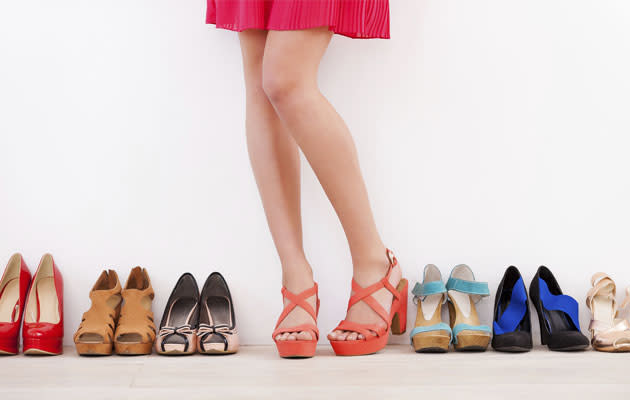4 Types of Shoes That Aren't Good for Your Feet
4 Types of Shoes That Aren’t Good for Your Feet

It is estimated that in an average lifetime, we use our feet to walk the equivalent of five times the circumference of the earth. Yet we rarely give our feet -- and our footwear -- much attention beyond aesthetics.
Shoes may be in fact the most important part of an individual's attire, as no other article of clothing must fit so precisely and perform critical mechanical functions such as transferring body weight.
Aside from immediate foot discomfort, inadequate or incorrect footwear may lead to problems with the lower legs, knees, hips and lower back.
In addition, falls - which can have dire consequences in the elderly - are most frequent among those with poorly fitting footwear.
Characteristics to look out for in a shoe
There are many characteristics to a good shoe. Typically, price isn't a factor as a good shoe may be cheaper than an inappropriate shoe, and famous brands are not a guarantee of a quality shoe. You should check if the shoe has the following features.
1. Adjustable
There should be an adjustable strap such as laces or Velcro which allows for adjustment depending on an individual's needs.
2. Stable
The shoes' heel support / heel cup should be soft and stable, preventing vertical or horizontal heel movement.
Related article: Do you have heel pain? These simple calf exercises can help.
3. Roomy enough
There should be sufficient room (both width and depth) at the front of the shoe for your toes. During normal walking your foot both spreads out and lengthens up to one centimeter in each direction. Therefore, you should pick a shoe that is longer than your longest toe by about the width of your thumb.
4. Max 2.5cm (1 inch) heel
The shoe's heel must not exceed 2.5cm in height. Otherwise, the heel and ankle become more unstable and thus prone to sprains and forefoot pain.
5. In good condition
Monitor your footwear and discard shoes that are too worn-down, as these have often lost some of their basic functions. Continuing to run in worn-out running shoes increases the stress and impact on your legs and joints, which can lead to overuse injuries. It is suggested that a pair of running shoes should be changed every 500 to 650 kilometers (300-400 miles).
Types of shoes that spell danger
Flip-flops (sandals)
Most Singaporeans own several pairs of flip-flops. Podiatrists will tell you that flip-flops are too flat, too thin and too open and can lead to many foot problems. They should thus be avoided in case of prolonged walking because they offer very little to no arch support, heel cushioning or shock absorption. This type of shoe can accelerate the problems associated with having a flat foot.
Furthermore, the thong that sits between your toes can also be dangerous as it forces your toe muscles to over-grip, which may lead to an overuse injury. These injuries may lead to toe deformities such as hammer toes or claw toes. Podiatrists see these issues on a regular basis.
Related article: How do you treat and prevent foot corns and callus?
High heels
Wearing heels shifts your weight to your forefoot, which increases the pressure to this area and typically leads to forefoot pain. High heels also create a balance problem; as you force your knees and hips forward, it may lead to pain and discomfort in your back and legs.
It is estimated that every inch (or 2.5cm) of heel raise results in a 25 per cent increase in body weight transfer to your forefoot, with the associated risk of forefoot pain.
Wearing high heels also increases the risk of developing nerve impingements, bunions and hammer toes. Such problems can often be permanent and may require surgical correction.
Over-roomy shoes (clogs or Crocs)
This type of shoes has become very popular recently; however it was never intended to be used for extensive walking. The shoe was originally developed as spa footwear.
Since the extra roomy toe box has no adjustable strap, the feet move around a lot, which causes them to be unstable and may lead to foot and lower limb pain.
Ballet flats
Shoes that are too flat don't provide adequate arch support, which is especially an issue for those with flat feet. Furthermore, as the soles are often very thin, they provide insufficient shock absorption. The force from the ground is directly transferred onto the soles of your feet, which can lead to discomfort in prolonged walking.
There's also a higher risk of the sole being pierced by a foreign object.
Related article: 7 tips to prevent ringworm from spreading
Get more health tips at HealthXchange.com.sg and sign up for our FREE e-newsletter.
By Gerard Evans, Podiatrist, Department of Podiatry, Singapore General Hospital (SGH), a member of the SingHealth group, for HealthXchange.com.sg.
Articles on HealthXchange.com.sg are meant for informational purposes only and cannot replace professional surgical, medical or health advice, examination, diagnosis, or treatment.

